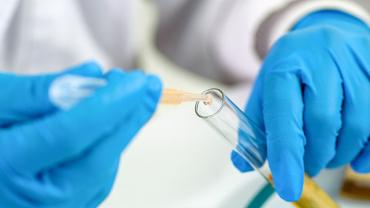
Cannabis research and marketing efforts have exploded since the 2018 Farm Bill was signed into law at the end of the year, officially declaring that hemp and hemp-derived products such as CBD oil are no longer federal controlled substances. Many consumers expressed confusion surrounding the composition and use of CBD as well as its distinctiveness from its psychoactive cousin, THC. However, much of the confusion is rooted in misunderstanding and lack of knowledge, highlighting the importance of being well-informed about the intricate chemistry behind cannabis and the endocannabinoid system in the body. Although our understanding of the body’s endocannabinoid system is in its infancy, ongoing and robust research is offering exciting discoveries of the vast number of potential therapeutic applications of compounds that target this system.
The endocannabinoid system is found predominantly in the nervous system and immune system, but trails into other organs and tissues. Of the two primary receptors, CB1 and CB2, the former seems to be the preferred receptor in the nervous system and located primarily at the presynaptic terminals of central and peripheral neurons.
Far more research has been conducted on the CB1 receptor since it was first discovered as the receptor of choice by the major psychoactive component of Cannabis Sativa; namely, THC. Despite its controversial beginnings, ongoing research has revealed that the CB1 receptor may be a therapeutic target for neurodegenerative conditions such as Huntington’s disease and Parkinson’s disease, which are both marked by low expression and desensitization of the CB1 receptor, and relief of neuropathic pain associated with multiple sclerosis and spinal cord injuries.
A brief overview of the activity of the CB1 receptor reveals that ligands initiate conformational changes in the receptor which activate intracellular signaling pathways and modulate various intracellular activities with pharmacological responses. One of the main outcomes of CB1 receptor activation is the modulation of neurotransmitter release.
CB1 – A G Protein-Coupled Receptor
Structurally, CB1 is a member of the Class A G protein-coupled receptors (GPCRs) – the largest family of cell membrane protein receptors. Interest in the family of GPCRs is growing since they are largely involved with cell signaling pathways. At the most basic level, GPCRs bind extracellular ligands, which trigger a conformational change in the receptor, and transmit signals to an intracellular G protein (guanine nucleotide-binding protein). G protein activation begins a series of intracellular activities with pharmacological outcomes. In fact, approximately 34 percent of all drugs approved by the US Food and Drug Administration (FDA) target the GPCR.
Class A GPCRs are classified as the largest of the six classes of GPCRs and are also called rhodopsin-like GPCRs, owing to the fact that rhodopsin – a light-sensitive pigment found in the rods of the retina – is a GPCR. This class of GPCRs generally includes hormones, neurotransmitters, and light receptors.
Class A GPCR Ligands
Many Class A GPCRs are activated by lipid-derived endogenous ligands, each of which initiates a different signaling pathway leading to a unique functional outcome. Endogenous lipids, 2-arachidonoylglycerol (2-AG) and N-arachidonoylethanolamine (ananadamide, AEA), are the primary ligands for CB1. However, N-arachidonoyldopamine (NADA) and the steroid hormone pregnenolone are also CB1 agonists. Of the phytocannabinoids, THC is the primary agonist for CB1, producing a distinct antinociceptive response. The majority of current research indicates that CBD has a low affinity for CB1, but controversy exists since some studies show that CBD is a negative allosteric modulator THC and 2-AG and that this activity has different functional outcomes. Finally, various indole chemotypes can act as CB1 ligands.
With an understanding of the CB1 receptor as a member of the prominent and widespread family of Class A GPCRs, it is plausible to suggest that this receptor can be a target for numerous therapeutic applications. At present, modulation of the CB1 receptor is a primary focus for helping to manage addiction, anxiety, depression, and neurodegeneration; however, researchers are beginning to establish an understanding of how specific ligands are linked to the various pharmacological outcomes of CB1 activation. Cannabinoid ligands such as 2-AG, AEA, and THC have been associated with analgesic activities while others evoke hypolocomotive responses which may be helpful in management movement disorders. Still others may lead to anti-epileptic and anti-inflammatory outcomes. Without a doubt, the CB1 receptor is an intricate GPCR with great therapeutic potential.